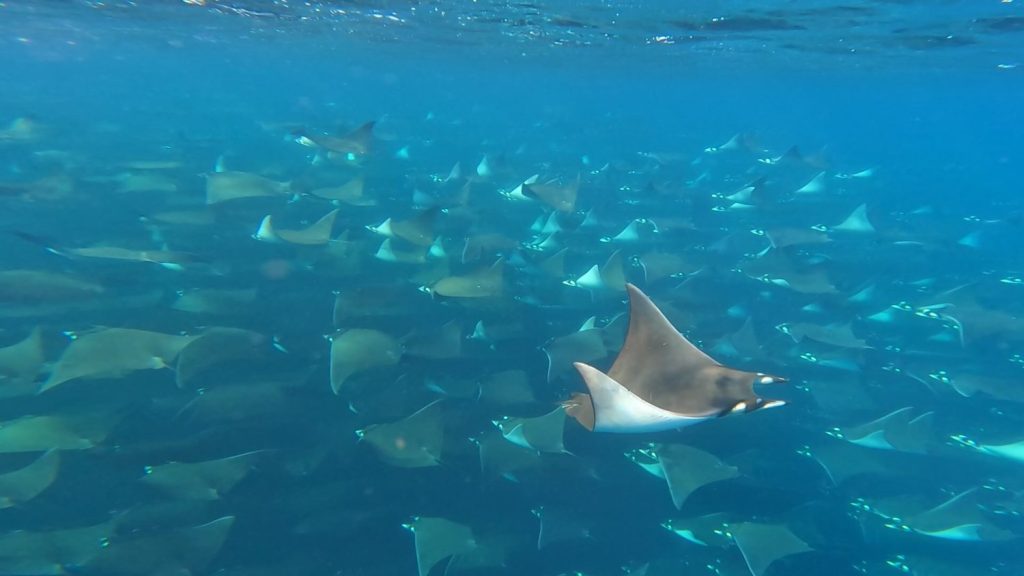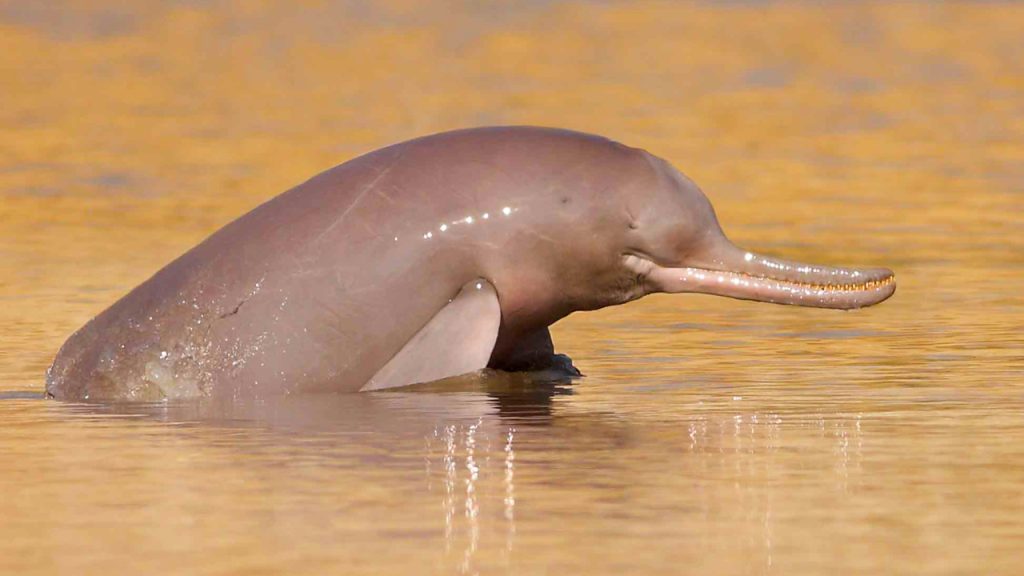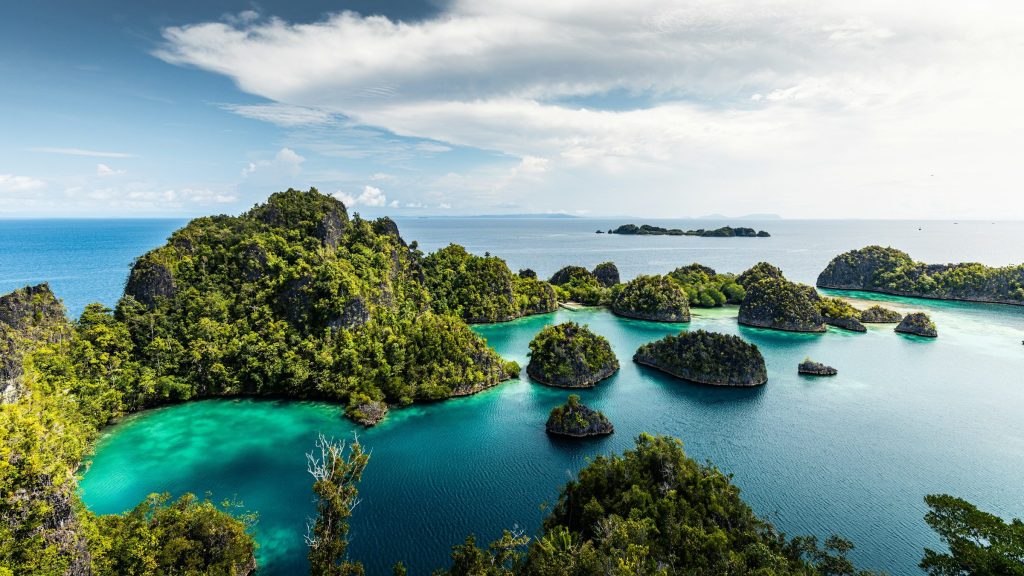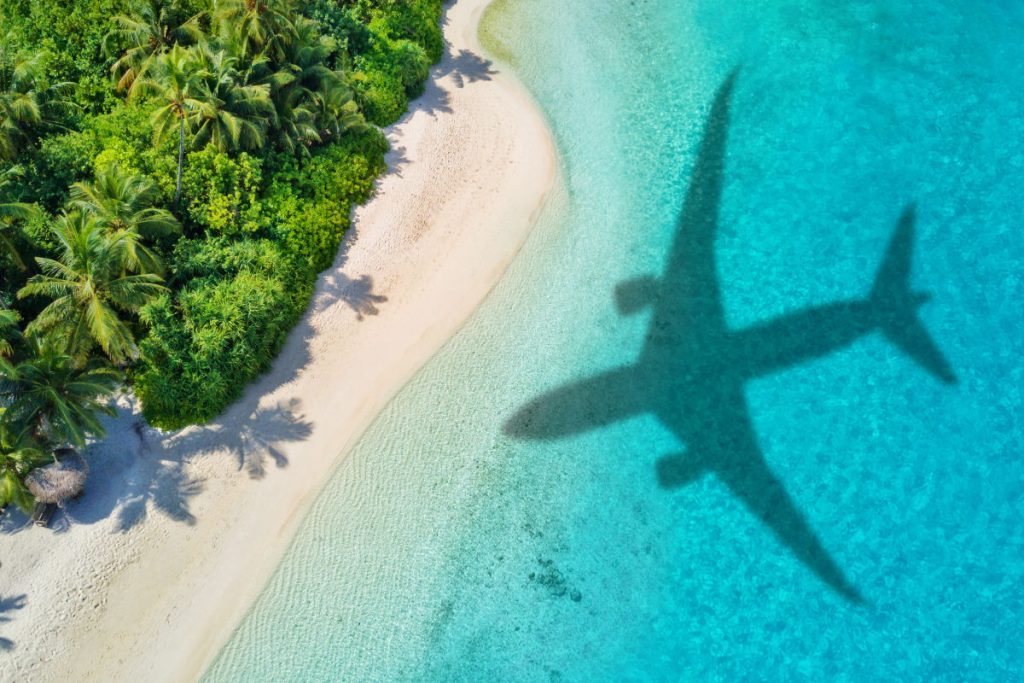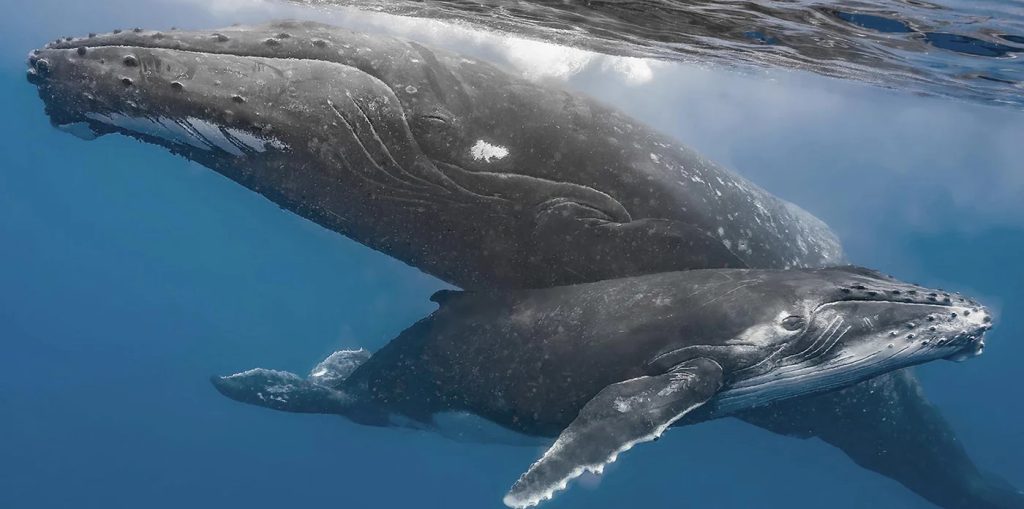Embracing Diversity and Inclusivity – Lessons From the Ocean
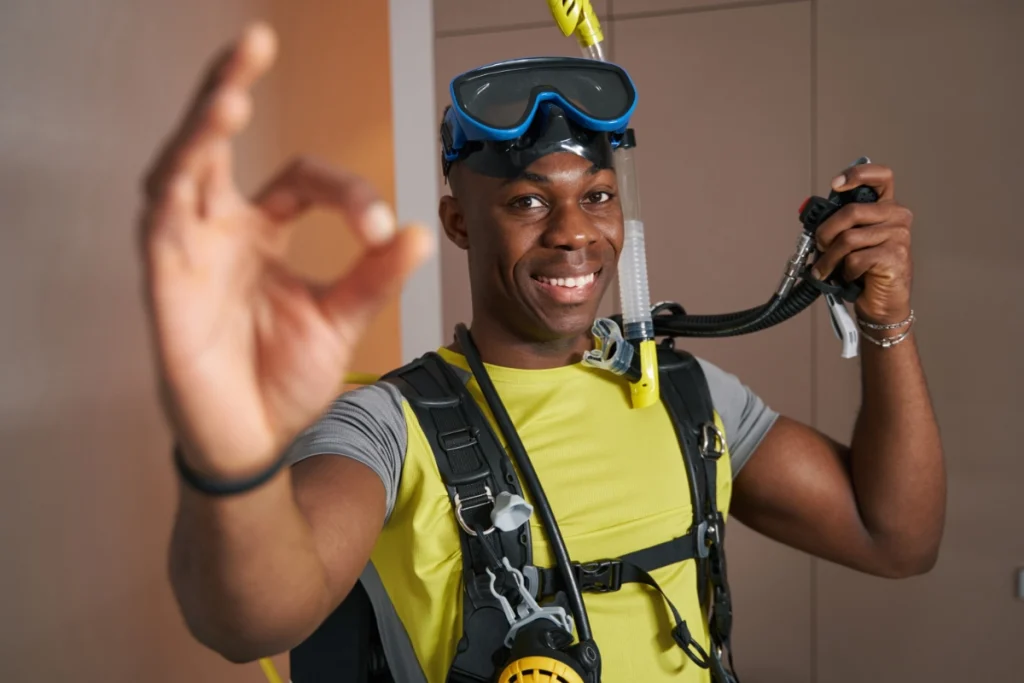
Is diving for everyone? I often get that question. Well, pretty much.
Yes, anyone can join a diving community. Taking inspiration from our mother Ocean, we are open to welcoming anyone that wishes to join. Whether you’re from the bustling streets of New York or the serene beaches of Bali, diving brings us together like nothing else. It’s not just about exploring the ocean’s depths; it’s about connecting with fellow adventurers from all walks of life.
Imagine this: you’re diving in the crystal-clear waters of the Maldives, surrounded by a group of divers from different corners of the globe. As you glide effortlessly through the underwater paradise, exchanging knowing nods and playful gestures, you realise that language isn’t a barrier here—it’s a bridge. Underwater, everyone speaks the same language. The lost-in-translation issue is left on the surface with your Google Translate or whatever you use to communicate while you travel.
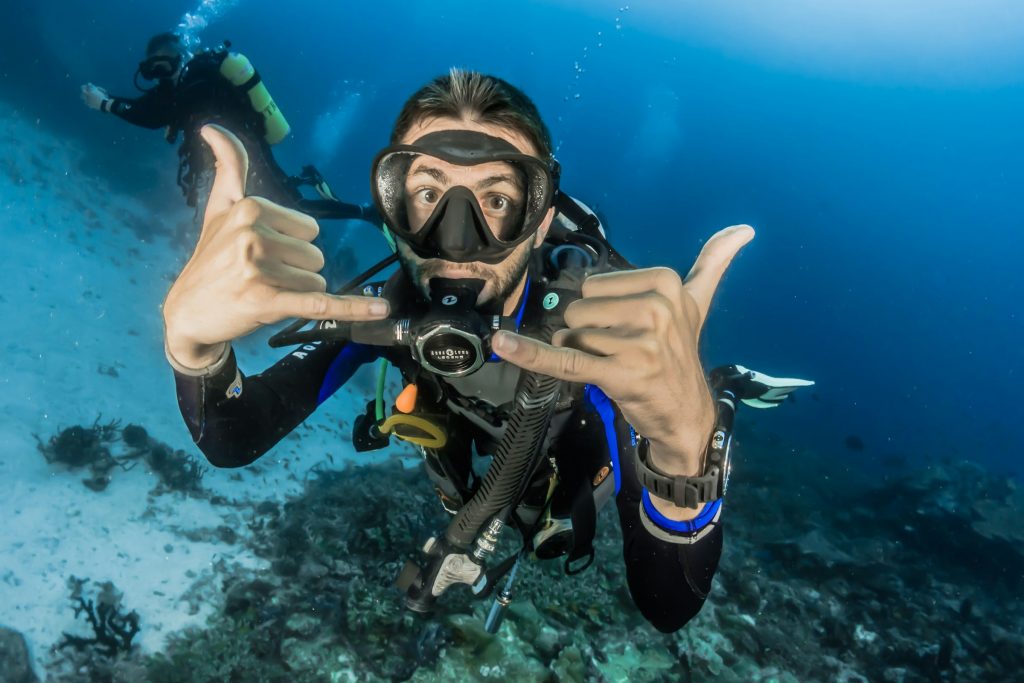
Pretty much all over the world, diving hand signals are the same. Well, maybe with small variations, and what’s the best? You can add more if you would like to understand your buddy better. I have a plethora of signals for different kinds of fish, and diving with me often is like playing underwater charades.
When we dive, we immerse ourselves in a world of unparalleled diversity. As you glide through the water, take a moment to observe the stunning variety of fish around you—they come in all shapes, sizes, and colours, mirroring the beautiful diversity of our human species. Among these aquatic marvels, some species embark on incredible journeys spanning thousands of miles throughout their lifetimes. Some fish navigate rivers and oceans with remarkable precision, travelling vast distances to fulfil their life cycles. What’s truly inspiring about these migrating fish is their ability to traverse different environments seamlessly. It doesn’t matter where they start their journey or where they end up; they are welcomed and find their place in various parts of the ocean.
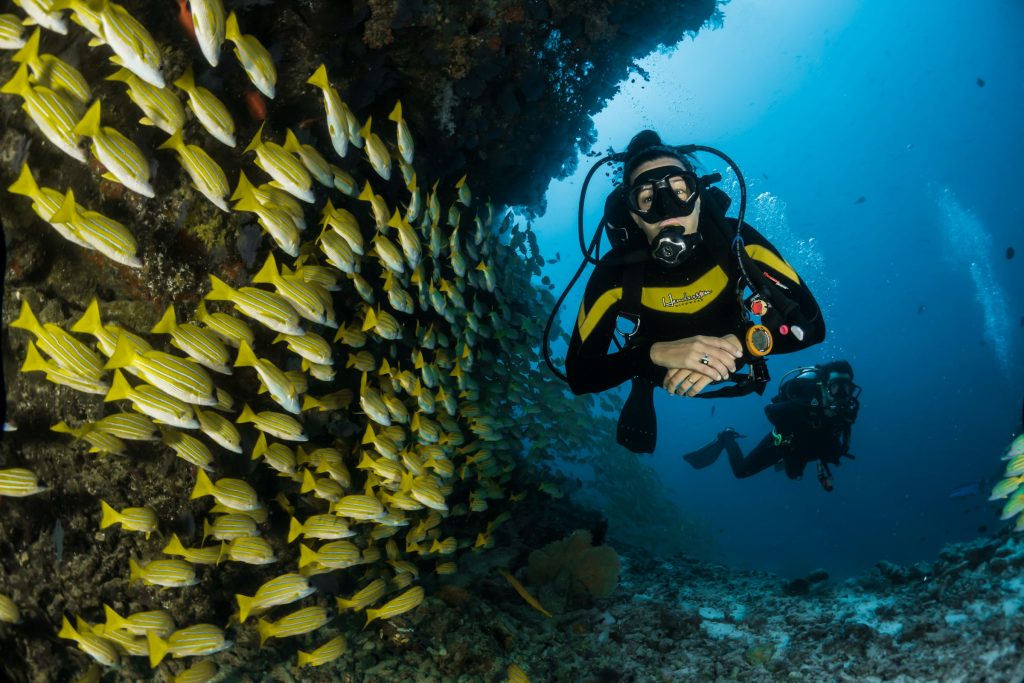
Just like these fish, we embrace and welcome diversity in all its forms. It doesn’t matter where you come from, what language you speak, or what your background is—when you dive, you become part of a community. We strive to be as welcoming and inclusive as the ocean itself, recognising that every diver adds richness and depth to our shared experience beneath the waves.
Another captivating aspect of marine life is the fluidity of gender and sexuality among certain species. Many fish exhibit unique reproductive strategies, with some species being hermaphrodites—meaning they possess both male and female reproductive organs. This remarkable adaptation allows them to change sex as needed, depending on environmental or social factors. One of the most iconic examples of this is the clownfish, made famous by the movie “Finding Nemo.” In the world of clownfish, all individuals are born male. However, as they mature and social dynamics within their groups change, certain individuals undergo a transformation, becoming females. This transition is not just a physical change but also involves behavioral adaptations that contribute to the social structure and reproductive success of the group.
The ability of clownfish and other hermaphroditic species to change sex highlights the incredible diversity of marine life. It also serves as a powerful metaphor for the acceptance of diversity and fluidity in human gender identity and sexuality. Just as fish navigate their social structures without judgment or prejudice, we can learn from their example to create a more inclusive and welcoming society for everyone. The ocean’s biodiversity reminds us that diversity is not only natural but also essential for the health and resilience of ecosystems.

Diving truly is a sport that welcomes everyone, regardless of shape and size. One of the first and the most amazing things divers notice is the weightlessness underwater. It’s a sensation like no other, where your body feels light and free, unencumbered by gravity’s pull. And guess what? That weightlessness isn’t just a feeling—it’s a fantastic calorie burner! A single dive can burn hundreds of calories, making it a fun and effective way to stay fit while exploring the underwater world. However, for our curvaceous divers, it’s crucial to be mindful of DCS risks. Body mass can affect how nitrogen dissolves and off-gasses during dives, and that can be a predisposing factor to DCS. But hey, don’t let it stop you! Make sure you follow conservative dive profiles or choose Nitrox (here link to the Nitrox Course), which allow for gradual ascents and sufficient safety stops or lower the Nitrogen intake during the dives to minimise these risks.
This diversity in marine life mirrors the inclusivity of the diving community. Underwater, no one cares about your race, religion, gender, or sexual orientation. It’s a place where everyone is welcome, where the only thing that matters is your love for the ocean and its inhabitants. The underwater world is yours to explore and enjoy.
Hurray! Together, as divers, we can celebrate the beauty of diversity and ensure that our underwater world remains a place of unity, exploration, and wonder for generations to come.

